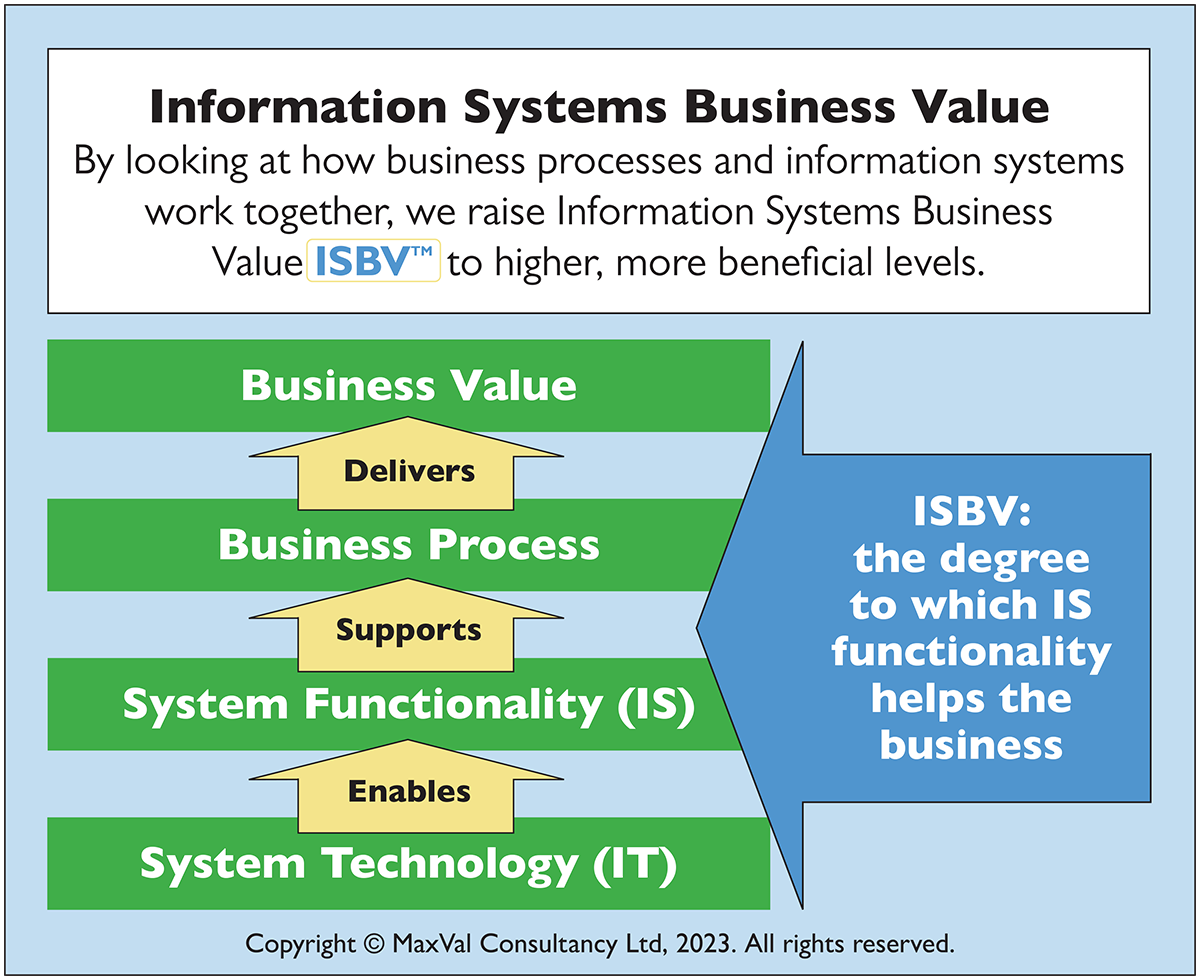MaxVal Consultancy can increase your capability to maximise net gain (value), success and return on investment (ROI) by a significant, even dramatic degree. Here, discover a better way to achieve this perennially elusive pinnacle of successful business and organisational IT!
Industry has been grappling with this crusade for several decades, and not made very significant progress (especially given the exponential speed of the increase in hardware capability). The reason for this is that the focus has been a bit off-piste; what has been thought to be the key issues are actually not the key issues!
David P Jacobs of MaxVal Consultancy, the world’s leading Business Value Maximisation Specialist (BVMS) for IT and digital transformation, explains here why more value is there to be had; we just need to know how to get it.
David has run a 30-year research and development programme that has identified most of the central issues that have been missing, incorrectly portrayed, or just not clearly articulated. When any other set of methods, practices, approaches or frameworks are underpinned by the results of this R&D programme, encapsulated in Business Value Maximisation Framework (BVMF®), a different world of value opens up.
Tracking the missing elephant
The methods we have been using were adopted from engineering and adapted for use with computing/IT/digital transformation projects. Some of these evolved/emerging methods are certainly not bad and have a contribution to make to this quest that we all are involved in to boost our organisations to be more effective, efficient and powerful using IT/computers.
However, IT/computing/digital transformation projects and activities have specific characteristics when it comes to maximising their utility and value that differ from the characteristics for optimising value and success from physical engineering.
Industry’s main focus has been on writing software, which is like having your dog’s tail spruced up when the rest of the dog is still very grubby! The business processes that deliver the success and value by achieving (or exceeding) the business objectives are too often left to their own devices rather than being used, holistically and pro-actively, as the driver of what is required of software functionality that will work with human beings to bring about the meeting (or exceeding) of the organisational objectives.
We also have some decent methods for running projects around this heavy focus on software production, helping to manage the whole process. But, again, these methods are for running projects instead of being obsessed (like we are) with getting the maximum value, success and ROI for the organisation by incorporating software-assisted processes into the ways of working.
There are other reasons, which I won’t try to cover here, why business IT has struggled to fulfil its potential. However, the factors outlined thus far account for most of the skirting around what I believe are the central issues of gaining maximum value and success from business and organisational IT. The elephant in the room!
Credibility for the journey
Why am I qualified to talk about this? Over the last few decades, I’ve produced BVMF®, which knocks the socks off most other methods, approaches, practices and frameworks. However, I am pleased to say that I am not trying to knock anyone else’s socks off but adding ingredients into the value cake that have been missing, incorrectly framed, or too lightly considered.
The beauty of this Business Value Maximisation Framework (BVMF®) is that it sits under most other methods, approaches and practices providing underlying principles that have been missing or unclearly defined. BVMF® does not try to replace the other methods (why reinvent the wheel?), but crucially sets up a sound set of foundations upon which the upper floors of the block of value related flats can be built.
Sorry to mix metaphors, but they bring such clarity! So, BVMF® supplies the fundamental, underlying principles for gaining maximum business value, success and ROI from IT, boosting the power of all the other methods by a powerful factor.
What happens when BVMF® is used?
Instead of IT value creation being a rather hit-and-miss endeavour, as has been the case for many years, with these fundamental principles in play, the probability of successfully achieving or even exceeding project business objectives is greatly elevated, profoundly so. This translates to not only a substantial increase in the likelihood of meeting business case objectives but also the realisation of the harder-to-predict value.
For example, say your business case states that your project aims to progress from making and/or selling 30 widgets a week to 40; when you conduct the project, it is often possible to raise the result by another five or even ten widgets a week, to 45 or even 50 widgets in total.
By reducing the uncertainty and increasing the understanding of what value is and how to get it, these extra harder-to-predict five or ten widgets may even come for free, or at the least for very little additional effort or cost. Would most organisations want such a result? Of course!
Seeing is believing
If you think this sounds too good to be true, let me say this. You can see for yourself why this works. When you see that the BVMF® models and techniques make such logical sense, you will try them out; then, you will feel, see, touch and smell the logic of the whole paradigm.
You can read about my 30-year R&D programme and what BVMF® does and contains (75 models and 450 techniques) by clicking here. You will find links to articles, presentations and a podcast aimed at business seniors and owners, business analysts and all business IT project roles. You can even see some of the basic BVMF® models and techniques by looking at the presentations I have given which are listed on the home page’s Latest News feed.
Using the Contact form you can also request a personal presentation for your organisation when we will focus on your specific issues and challenges and advise how we can help, with or without BVMF®. Usually with.
Measure to maximise, maximise to measure
BVMF® has various measurement and associated value-maximising mechanisms so you can be in touch with your required value from the start through to the finish. Except that there usually isn’t a finish because maximum IT business value is a moving target and involves an unending journey of progress that we all need to undertake. Processes and IT systems need near daily attention to stay at maximum performance – it took industry a long time to realise this.
Project teams used to celebrate when a project was finally implemented and rarely went back to check that the processes and systems deployed were working optimally. Processes and systems that were maybe 65% effective on day one, were 45% effective 18 months later, waiting for the next project to be initiated to upgrade, replace, etc.
This is one area where agile methods have certainly helped, although, as we will explain, the adoption of agile, as it has rolled out, has not been free from ‘baby out with the bath water’ syndrome.
Measuring & improving IT effectiveness
Using our IT Effectiveness Spectrum™, we will measure your current IT Business Value Capability (ITBVC)™, identify weak areas and plan to strengthen them. We will do this for a set of 20 basic criteria without charge for interested organisations.
When we subsequently go into more depth, we will charge fees to cover our costs and pay our consultants, although we always aim to provide much more value than we take. In any case, we will start by assessing your ability to produce information systems business value (ISBV)™ and planning to improve it. Here is a simplified diagram to show what we focus on as we work through from simple to more sophisticated levels of assessment.

Get in touch if you want to learn more about us and BVMF®. We look forward to speaking with you.

This work is licensed under Creative Commons Attribution-NonCommercial-NoDerivatives 4.0 International.











